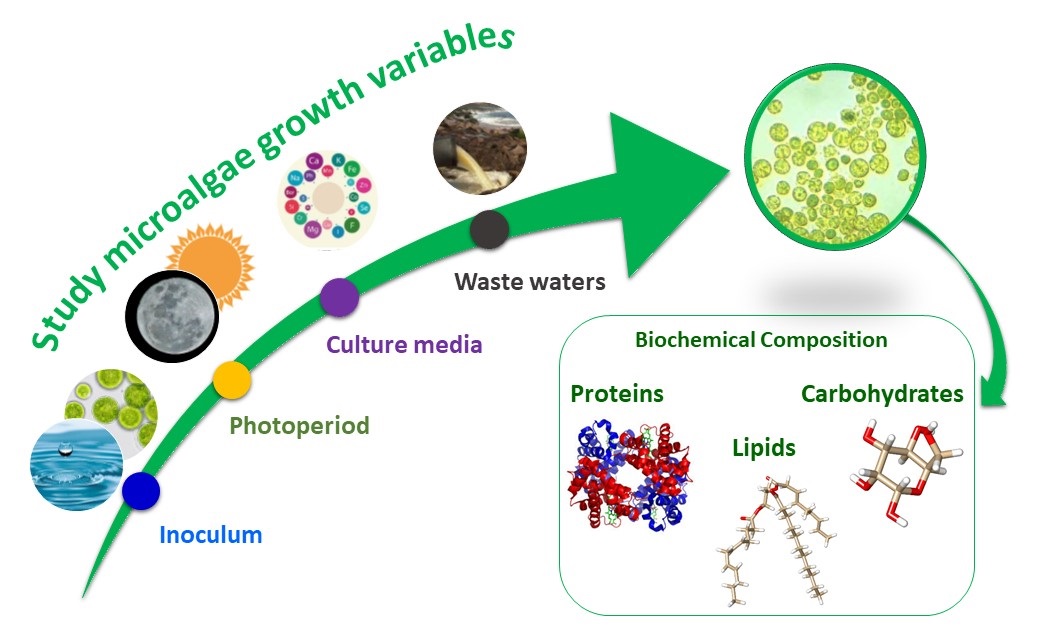The purpose of this work is to define optimal growth conditions for batch culture of the cyanobacterium Arthrospira maxima and the microalgae Chlorella vulgaris, Isochrysis galbana and Nannochloropsis gaditana. Thus, we study the effect of three variables on algae growth: i.e., inoculum:culture medium ratio, light:darkness photoperiod and type of culture medium, including both synthetic media and wastewaters. The results showed that the initial inoculum volume did not affect the amount of biomass at the end of the growth (14 days), whereas an excess (18 h) or defect (6 h) in the number of hours of light is determinant for its development. The contribution of nutrients from different culture media modified the growth of the different species. A. maxima was favoured in seawater enriched with Guillard's F/2 as well as C. vulgaris and N. gaditana but in fresh water medium. I. galbana had the greatest growth in the marine environment enriched with Walne’s media. Nitrate was the limiting growth reagent at the end of the exponential phase of growth for C. vulgaris and N. gaditana, while iron was for A. maxima and I. galbana. All species demonstrated their capability to grow in effluents from a wastewater treatment plant and they efficiently consume nitrogen, especially the three microalgae species.

